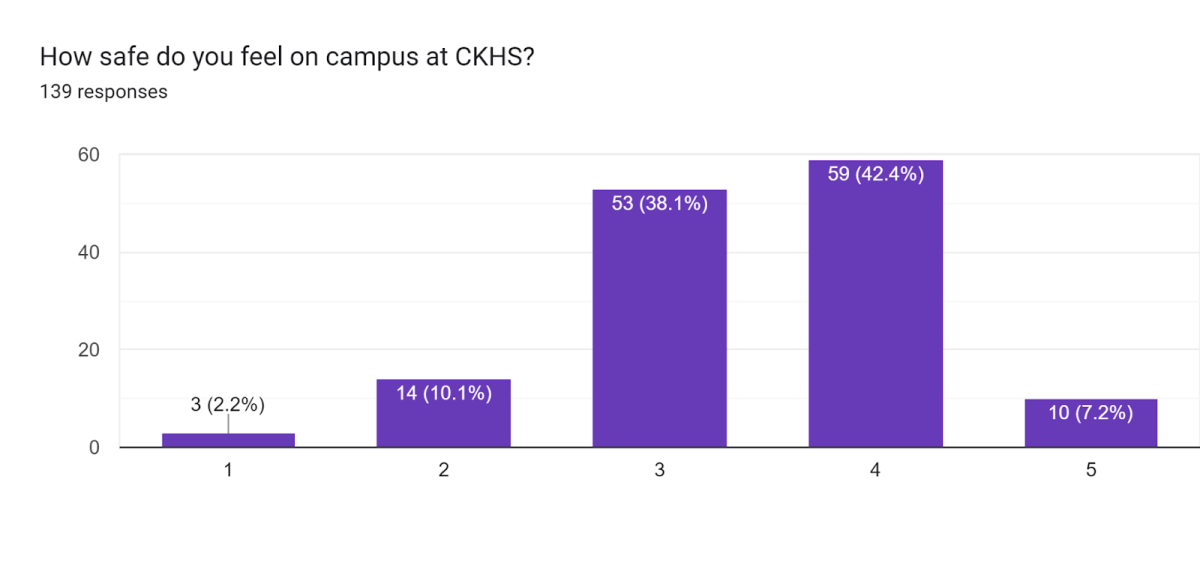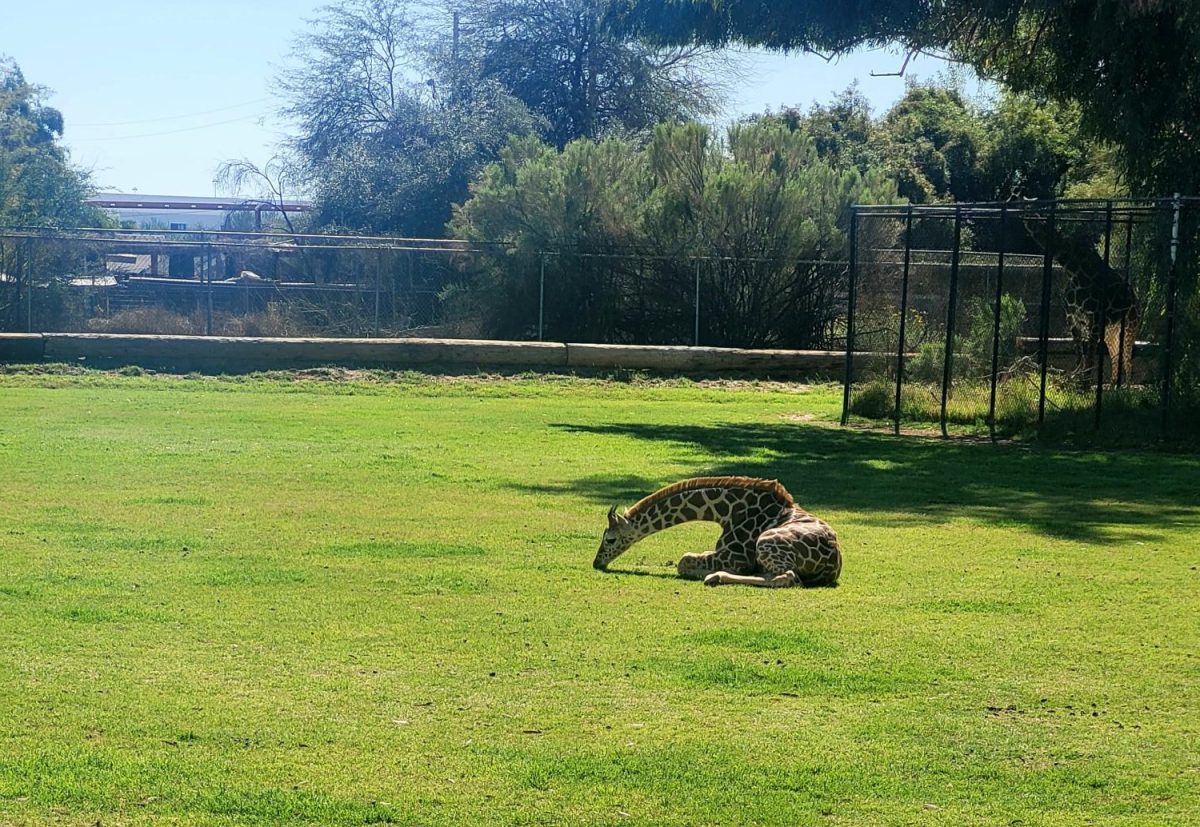The on-going issue of gun violence is one that continues to cost the lives of innocent students and faculty in schools across the United States. Unfortunately, hearing tragic stories of mass shootings in public spaces or targeted shootings in schools from the news to the people in our own community has become far too common. The prospect of an unforeseen emergency that would warrant a lockdown weighs on the minds of our students and teachers alike, and the risk of an on-campus threat should be the last thing a parent should have to worry about while their child is at school.
For nearly a decade, the CKSD has been utilizing ALICE School Safety & Shooter Training in precaution of a potential active shooter or intruder situation. The acronym “ALICE” stands for “Alert, Lockdown, Inform, Counter, Evacuate.” The ALICE Training program advocates for “proactive option-based strategies” as opposed to traditional lockdown responses.
Today, Central Kitsap High School’s student body expresses varying degrees of hesitance and apprehension towards ALICE training and related material, as well as conflicting perceptions of the present state of on-campus security and effectiveness of current emergency response education and outreach.
Under Washington state’s safe school plans requirements (RCW 28A.320.125), all public school districts in the state must conduct a minimum of one safety-related drill a month, addressing and instructing students on how to respond to on-campus emergencies that would require a shelter-in-place, evacuation, or lockdown. This legislation also establishes guidelines for district emergency response and safety plans, stating that schools should address emergency mitigation, preparedness, response, and recovery, and annually review and update safe school plans in collaboration with local emergency response agencies.
While we as a school district may be meeting our minimum quota for practice drills, is this really where we want our action towards preparing students for unforeseen emergency situations, especially in the case of an intruder situation or threat of violence, to end?
On March 22, I created and sent out a Google Forms survey asking students about their feelings and perspectives on school security, the effectiveness of ALICE training, the frequency of drills and emergency response education, the appropriateness of ALICE training material for all grade levels, and ways in which respondents would like to see the CKSD respond to these issues in the future. Out of the 139 students surveyed, about half of the respondents expressed feeling moderately or mostly confident in how secure our campus is, their own ability to recall ALICE training, and the frequency of information currently shared regarding ALICE procedure.
Still, surveyed respondents were split across the board — often tending to lean moderately or less confident — about whether or not they felt CKHS staff and administration would respond to an active shooter or intruder threat in an efficient, transparent, or organized manner; the general response was similar when surveyed staff and students were asked how confident they would feel in other students to recall ALICE training. Respondents were also split in how confident they felt in their own ability to counter an attacker (the “C” in ALICE).
For example, in one portion of the survey I asked students to imagine that there was an active shooter, intruder, or general safety threat on campus. In this scenario, students were asked to rate their confidence level (on a scale of 1-5) in CKHS staff and administration to respond to the threat in an efficient, transparent, and organized manner. Only 7.9% of students responded (on a scale 1-5) with a five, and the majority of students (31.7%) responded with a three. Nearly a quarter (23.7%) of respondents answered two. With the majority of students responding with a three, and so few answering five, should we as a school consider this adequate?
I believe this data signifies that our administration and faculty must find a way to address and resolve this lack of confidence expressed by students and seek out what changes can be made that would encourage most, if not all of our students, to answer with a five.
The issue of gun violence in schools is a contentious one, and there has yet to be a clear, straight-forward solution for what schools should do to adapt and completely prevent these incidents from happening in the future. With that being said, public school districts across the nation should be sensible to the weight and complexity of this issue and mindful when choosing a plan of action for training staff, preparing/educating students on protocol, and conducting drills.
It is crucial that the district and administration play an active role in keeping students safe, even if that comes with difficult conversations about gun violence. It is also crucial that the district and administration navigate these conversations in a way that mitigates unnecessary stress or anxiety and promotes a school environment that feels safe, secure, and prepared.
Our district should take further action to ensure that all staff and students are informed on what ALICE procedures are and what the appropriate action is to take during emergency situations. Beyond preparing students for what to do during an emergency intruder situation, CKHS should also focus on ways they can proactively deter gun violence and general violence from occurring on campus.
CKHS does not have to rely solely on wearisome presentations or occasional drills. We have the ability to make students feel comfortable and involved in the security of our school by building a relationship of trust and communication with students, parents, and the Central Kitsap community.
In addition to this, we could work towards sharing resources for identifying the early signs of someone who is in crisis or at-risk of violent acts against themselves or others, and improve on current resources available regarding the process for reporting violent behavior. In order for reporting to be an effective preventative measure, students have to have faith that their reports will be taken seriously and administration will take action in response to serious allegations.
If only half of students feel the amount of information shared with them about ALICE and active shooter emergency procedures has adequately prepared them, this is an issue. If a significant number of respondents are sharing that they do not feel confident in CKHS staff, administration, and students to implement and execute our active shooter/intruder emergency response strategy, we as a school may need to reevaluate how we can best support students in feeling prepared and protected.
My survey showed that a portion of students do feel confident and prepared, but when it comes to safety, are we really satisfied with only half of students being on board? We must take action to bring all staff and students on the same page about our emergency response plan so that we can move forward as a unified student body.














